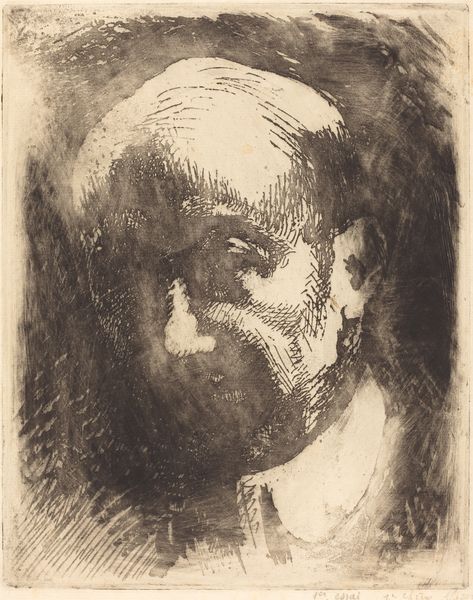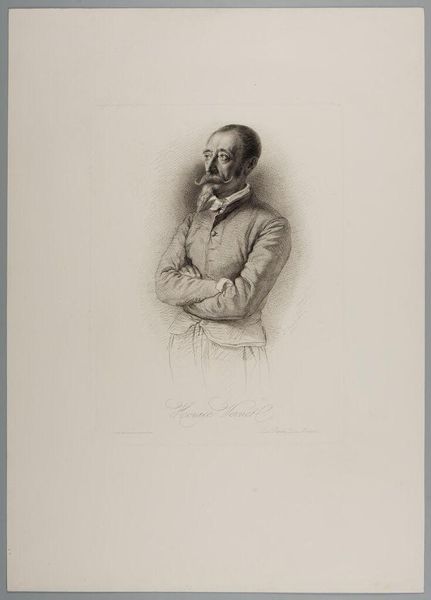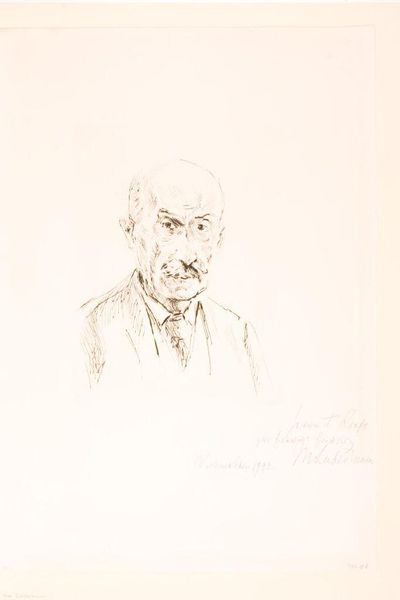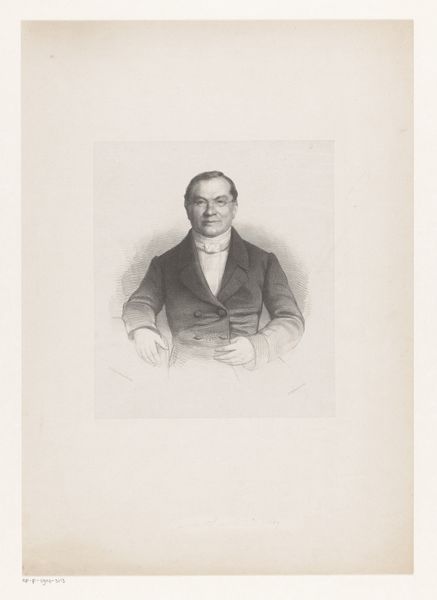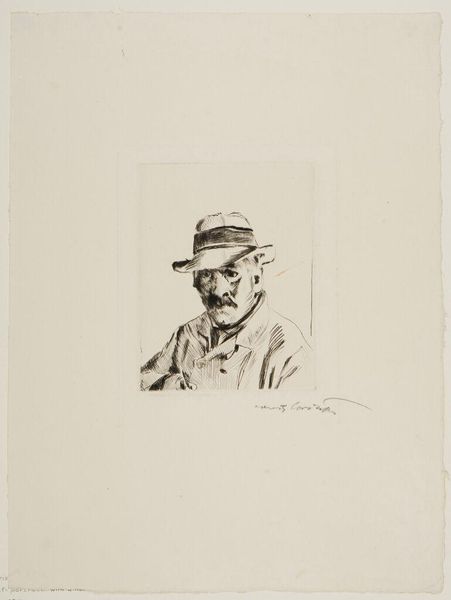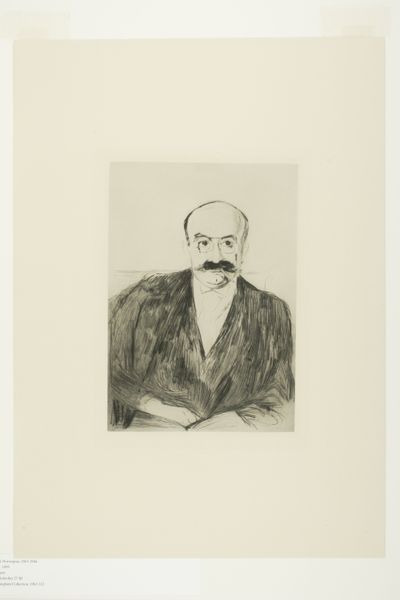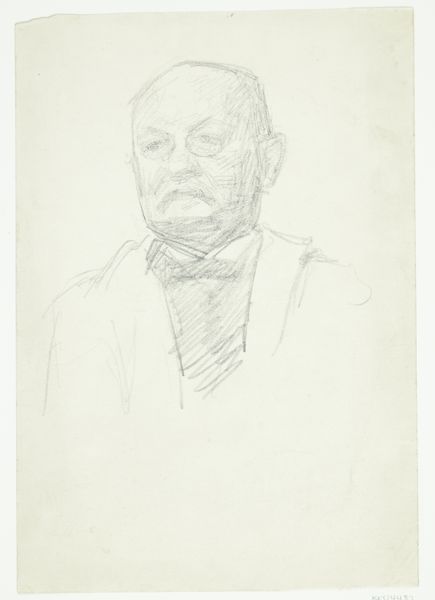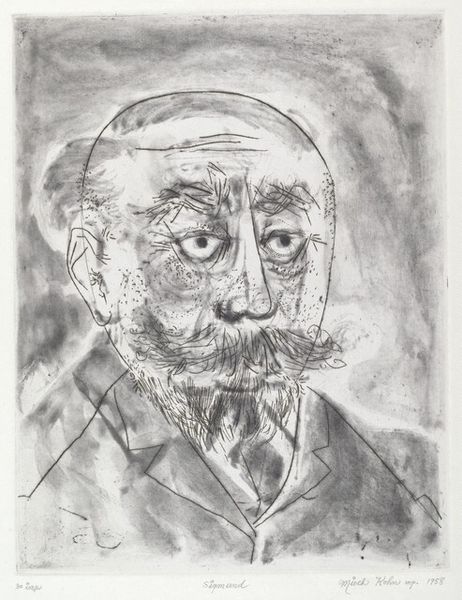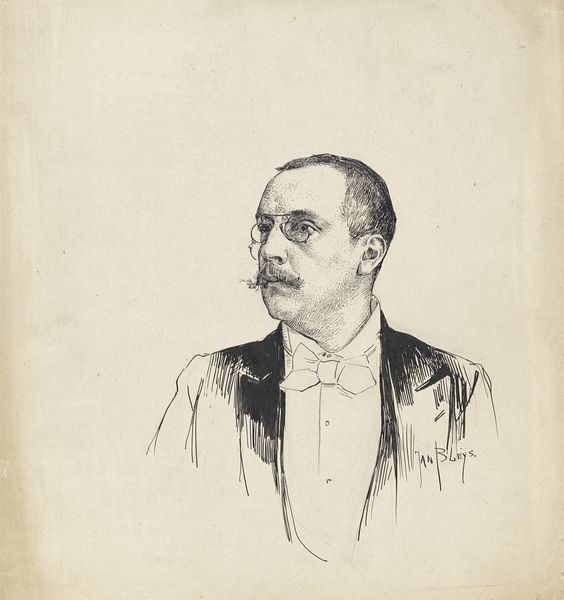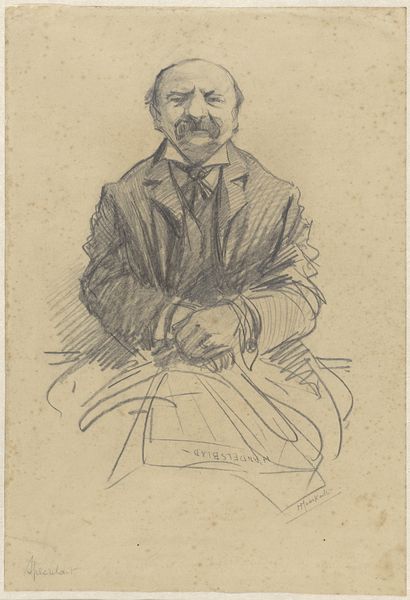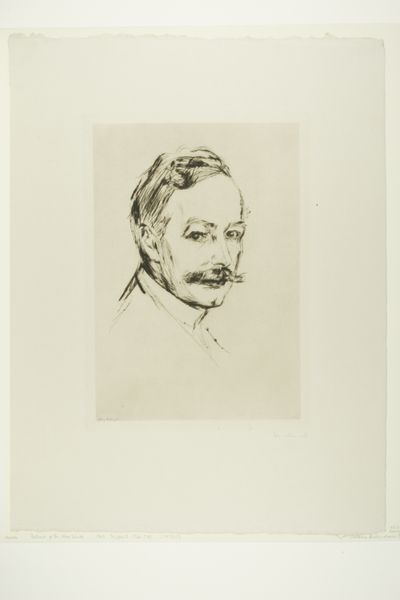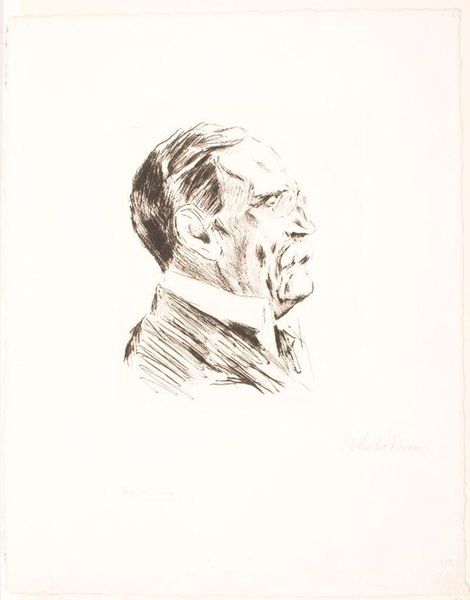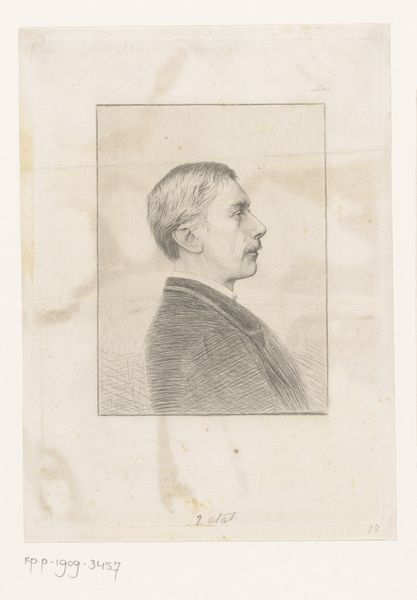
drawing, print, charcoal
#
portrait
#
drawing
# print
#
charcoal drawing
#
pencil drawing
#
portrait drawing
#
charcoal
#
portrait art
#
modernism
Dimensions: plate: 30.48 × 25.4 cm (12 × 10 in.)
Copyright: National Gallery of Art: CC0 1.0
Curator: This is Walter Tittle's 1921 print, "Monsieur Albert Sarraut, French Minister for the Colonies." Editor: The delicacy of the lines makes it seem almost ghostly. I'm immediately struck by the contrast between the detailed face and the rather unfinished quality of the suit. Curator: That tension you note is really interesting. The artist’s use of charcoal emphasizes form and light. Observe the meticulous cross-hatching; it gives the piece depth, highlighting Sarraut’s features. Editor: Precisely! And how complicit is Tittle in producing a symbol of colonial authority? Given Sarraut’s role, this portrait isn't merely a depiction, it's a carefully constructed image of power. The gaze seems intended to convey authority, but perhaps hints at underlying anxiety too? Curator: One could also view this piece in the context of Modernism; Tittle employs abstraction while still retaining the likeness of the subject. It’s not photo-realistic, but it is certainly recognizable. Note that Tittle really focuses on the geometry of the figure's facial features, playing with highlights and shadows. Editor: Sure, but we cannot separate this formal quality from its historical implications. Albert Sarraut helped advance and promote French colonialism, leaving an enormous legacy of damage and upheaval. That context dramatically changes our reading of the image and any appreciation we might develop for it. Curator: You raise a good point. Understanding the historical backdrop certainly provides a much richer experience for the viewer. Looking at the structure alone provides only an incomplete appreciation. Editor: Exactly. Hopefully, acknowledging this portrait allows us to consider the enduring impacts of colonialism and the representation of power, even through ostensibly simple portraits like this. Curator: It offers more nuance in appreciating not only artistic skill but the intricate dance between power and representation. Editor: Right. We need to approach it with eyes wide open.
Comments
No comments
Be the first to comment and join the conversation on the ultimate creative platform.
